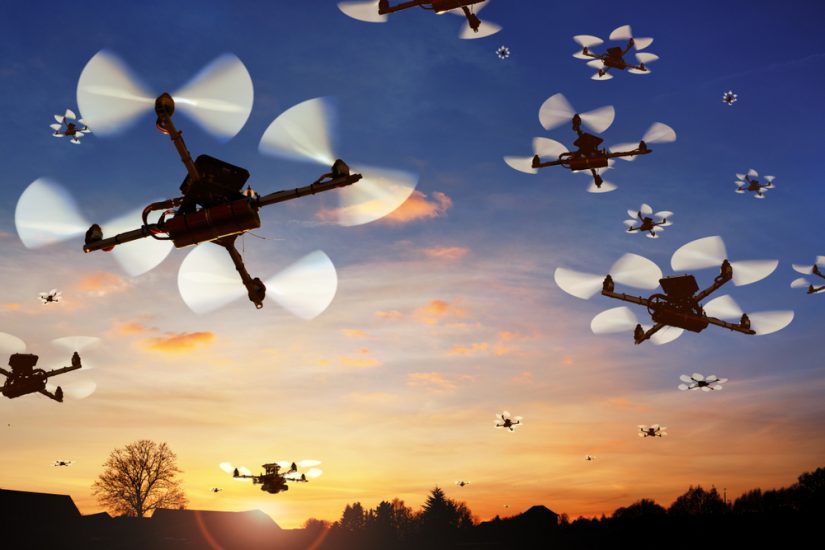At the end of November 2021 researchers working on the SESAR BUBBLES programme held their second open workshop to discuss the results of the work so far. The main goal of BUBBLES is to formulate and validate a Concept of Operations for providing separation management in very low-level airspace by means of the U-space, defining the basic blocks supporting it and describing how they must be assembled and operated.
As well as defining with granularity a detailed CONOPS, researchers also presented their findings on defining a reference target level of safety, computing unmitigated mid-air collision (MAC)frequency, estimating U-space airspace capacity and computing separation minima.
According to a press release:
“The first session began with the update of the concept of BUBBLES presented by Juan Vicente Balbastre, BUBBLES Project Manager, highlighting how BUBBLES envisages the application of the separation provision process described in the ICAO Doc. 9854 to UAS and how this led to the concept of separation management.
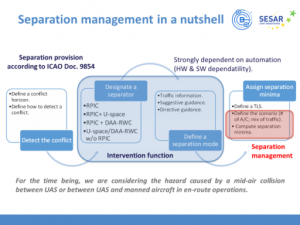
“Norberto Vera (UPV) presented a study to determine the Target Level of Safety(TLS) in terms of traffic density, mix of traffic and the shape of the safety bubble surrounding UASs. The effect of allocating vertical layers to certain classes of traffic on the global TLS was also addressed.
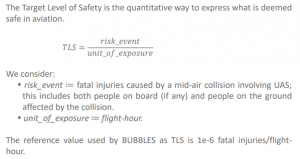
“The second session was presented by Cecilia Claramunt and Juan Vicente Balbastre, both from UPV, who described the steps carried out by the BUBBLES team to define the OSED and SPR. They were defined following MEDUSA methodology and considering the concept of operation of CORUS, the process outlined in EUROCAE ED-78A and inspired by the EUROCONTROL GEN-SUR SPR standard.”
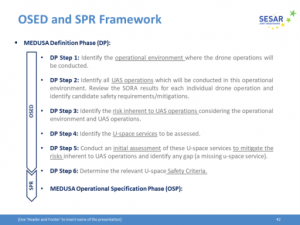
“The third session, validation results, began with the description of the validation plan by Cecilia Claramunt (UPV). Then, Pablo Morcillo (UPV) presented the results supporting the validation of the collision model for calculating separation developed by the project team, whereas Damiano Brunori, from La Sapienza University, presented the results of updating the separation minima applying AI. Finally, Tiago Cruz from Universidade de Coimbra, presented the system implementation that will be used to validate the SPR proposed by the project.
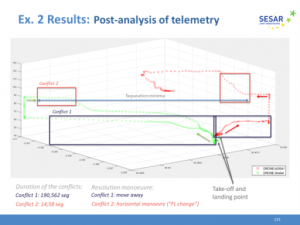
“As an example of separation minima obtained by BUBBLES project is presented the following table. It is worth highlighting that those values were obtained for the first phase of validation separation management concept, so they must be considered as provisional figures of separation minima, but not as the definitive ones proposed by BUBBLES.
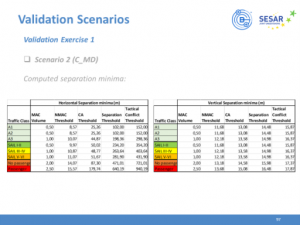
“Click here to download the slides used during the BUBBLES workshop.”
According to the project website:
“The project will also develop algorithms to compute the collision probability between drones and between them and manned aircraft operating in the VLL, using separation minima to keep it under acceptable levels. Moreover, the project will investigate how artificial intelligence (AI) can contribute to dynamically manage these minima using different separation methods and agents (from ground-based strategic conflict resolution to distributed self-separation). The mitigation effect of U-space services will also be taken into account, as well as the external and system induced risks (included those derived from the use of AI). Finally, BUBBLES will extend the concept of Performance Based Communications, Navigation and Surveillance (CNS) to the drone operations to draft safety and performance requirements and will develop monitoring tools in order to ensure that their actual performance complies with them.
“BUBBLES researchers are developing Artificial Intelligence (AI) based algorithms to compute the collision risk of UAS leading toseparation minima and methods so that a Target Level of Safety (TLS) stated in terms of overall probability of collision can be defined and maintained. These algorithms will be applied to a set of generic ConOps for UAS operations defined by BUBBLES, detailed enough to cover most of the envisaged applications, but generic enough not to be linked to any particular one. They will be classified in terms of risk using the SORA methodology. These separation minima and methods will be assigned to the ConOps using AI techniques, leading to the definition of a set ofgeneric OSEDs from which safety and performance requirements for the CNS systems will be derived applying a performance based approach.”
For more information
https://bubbles-project.eu/noticia/second-bubbles-workshop-2/
(Image: Shutterstock)



